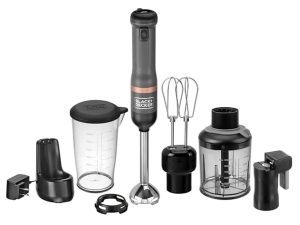
In the ever-evolving landscape of global tourism, culinary travel has emerged as a significant trend, drawing food enthusiasts from across the world. The intersection of travel and gastronomy is not just about tasting new dishes; it’s an immersive experience that offers a deep dive into the culture, traditions, and history of a destination. This article explores the top trends in culinary travel, providing a comprehensive overview of how food and travel are intertwined in today’s world.
Farm-to-Table Experiences
The farm-to-table movement has gained tremendous momentum in recent years. Travelers are increasingly seeking authentic, local dining experiences that emphasize sustainability and freshness. This trend involves visiting local farms, understanding the source of ingredients, and enjoying meals prepared with seasonal produce. Countries like Italy, France, and New Zealand are leading the way, offering farm tours and cooking classes that highlight their agricultural heritage.

Culinary Workshops and Classes
Another prominent trend in culinary travel is the rise of hands-on cooking workshops and classes. Tourists are no longer content with simply eating; they want to learn how to make traditional dishes from the regions they visit. These workshops often include market tours, where participants can select fresh ingredients, followed by guided cooking sessions with local chefs. Destinations such as Thailand, Spain, and Japan are popular for their immersive culinary classes.
Street Food Exploration
Street food has always been a significant part of the culinary landscape in many countries. However, it has now become a focal point for culinary travelers. Exploring street food markets offers an authentic taste of local flavors and provides insight into the daily lives of residents. Cities like Bangkok, Mexico City, and Istanbul are renowned for their vibrant street food scenes, attracting food lovers from around the globe.
Wine and Spirits Tourism
Wine and spirits tourism is a growing segment within culinary travel. Wine regions such as Napa Valley in the United States, Bordeaux in France, and the Barossa Valley in Australia are popular destinations for wine enthusiasts. These regions offer vineyard tours, wine tastings, and opportunities to learn about the winemaking process. Similarly, destinations known for their spirits, like Scotland for whisky and Mexico for tequila, are attracting tourists interested in the production and tasting of these beverages.
Food Festivals and Events
Food festivals and events are another major trend in culinary travel. These gatherings celebrate local cuisine and offer a platform for chefs, food producers, and artisans to showcase their talents. Events like the Taste of Chicago, the Pizzafest in Naples, and the Melbourne Food and Wine Festival draw large crowds, providing travelers with a unique opportunity to sample a wide variety of dishes and culinary styles.
Culinary Cruises
Culinary cruises have become increasingly popular, offering travelers a unique way to explore multiple destinations while indulging in gourmet cuisine. These cruises often feature renowned chefs, cooking demonstrations, and themed dining experiences. Destinations like the Mediterranean, the Caribbean, and Southeast Asia are favored for their rich culinary traditions and diverse flavors.
Wellness and Food
The intersection of wellness and culinary travel is a burgeoning trend. Travelers are seeking experiences that combine healthy eating with relaxation and rejuvenation. Wellness retreats that focus on organic, plant-based cuisine, detox programs, and cooking classes are becoming more prevalent. Destinations like Bali, Costa Rica, and the Greek Islands are leading the way in offering holistic culinary experiences.
Indigenous and Ancestral Foods
There is a growing interest in indigenous and ancestral foods as travelers seek to connect with the roots of a region’s culinary heritage. This trend involves exploring traditional cooking methods and ingredients that have been passed down through generations. Countries like Peru, India, and South Africa offer rich culinary traditions that highlight the importance of preserving and celebrating indigenous foods.

Food and Art Pairings
The fusion of food and art is an emerging trend in culinary travel. This involves curated experiences where meals are paired with artistic performances, exhibitions, or installations. These events provide a multisensory experience that enhances the appreciation of both food and art. Cities like Paris, New York, and Tokyo are at the forefront of this trend, offering innovative dining experiences that combine culinary excellence with artistic expression.
Culinary Tourism Technology
Technology is playing a significant role in shaping the future of culinary travel. Mobile apps, virtual reality, and social media platforms are making it easier for travelers to discover and share culinary experiences. Food bloggers, influencers, and review sites provide valuable insights and recommendations, helping travelers make informed choices. Additionally, virtual cooking classes and online culinary tours have gained popularity, allowing food enthusiasts to explore global cuisine from the comfort of their homes.
Conclusion
The top trends in culinary travel reflect a growing desire for authentic, immersive, and educational experiences. As travelers become more adventurous and discerning, the culinary tourism industry continues to evolve, offering a diverse range of opportunities to explore the world’s flavors. Whether it’s through farm-to-table dining, hands-on cooking classes, or wine and spirits tourism, culinary travel provides a unique and enriching way to connect with different cultures and traditions.






















